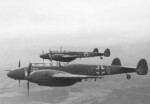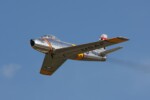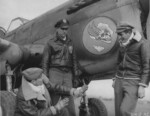Westland Whirlwind vs. De Havilland Mosquito: Which Was the Better WW2 Fighter?
10 August 2022 | Updated on February 05, 2024
Seventy-seven years after World War 2, heated debates about the war’s best fighter planes continue to rage. Perhaps a good reason for our interest in the fighter planes flying in the most destructive war in human history is that they represented the dawn of modern aviation. Pre-World War 2 aircraft airplanes were slow, had limited range, and frequently crashed due to poor engine design and flimsy airframe construction. However, the innovations in aircraft aerodynamics, propulsion technology, airframe design, and structural materials during WW2 resulted in faster and more durable planes that are still flown today and had a lasting impact on aircraft design and construction for more than half a century.µ
Fanboys of WW2 fighter planes often compare the most famous fighter aircraft to determine which has superior capabilities. Examples include the Supermarine Spitfire vs. Messerschmitt B109 and Mustang P51 vs. the Mitsubishi Zero. In this article, we will take a closer look at the Westland Whirlwind and how it compares to the De Havilland Mosquito.
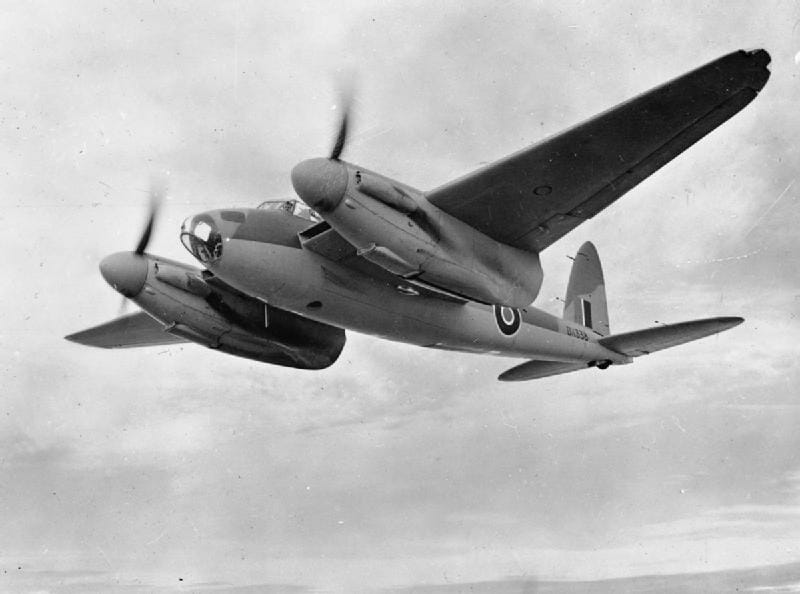

Although the Westland Whirlwind and De Havilland DH.98 Mosquito were fighter planes, they were different as two military aircraft that served in the same war can ever be. Westland Aircraft conceived the Whirlwind as a “fast heavy fighter” while the DH.98 Mosquito started life as a bomber. Both planes were designated heavy fighters by their manufacturers and the Royal Air Force. Also, they saw significant action against German and Japanese fighter planes in the European, North African, and Asian Theaters of World War II.
Our Westland Whirlwind vs. De Havilland Mosquito article compares both fighter planes to determine which of the two aircraft is the best WW2 fighter. We will base our conclusion on several factors, including aircraft design, engine, performance, armament, and ease of maintenance. You will also have the opportunity to view the vital stats of both aircraft and read a brief introduction.
The Westland Whirlwind
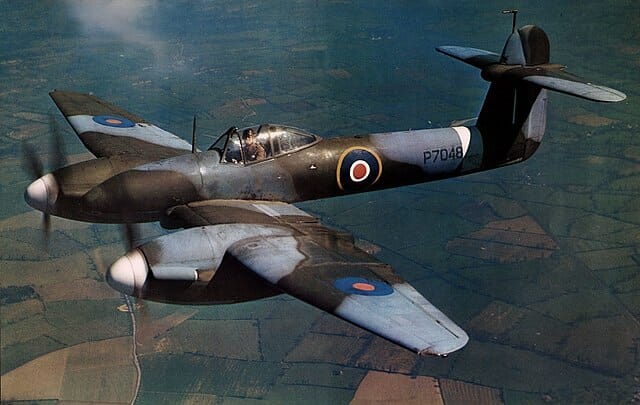

The Westland Whirlwind was a remarkable WW2 British fighter plane that served the Royal Air Force RAF alongside the Supermarine Spitfire and the Hawker Hurricane during the war’s early stages. Its launch heralded great promise for the RAF fighter fleet because it was the first twin-engine, single-seat, cannon-armed fighter of the Royal Air Force. Pilots flying the Whirlwind discovered it was freaking fast, and they were right because the aircraft launched in 1938 was the world’s fastest fighter plane. Westland engineers designed the Whirlwind using state-of-art technology, and they built the aircraft with a rugged tubular monocoque fuselage to protect the pilot during crash landings. Its formidable firepower came from four nose-mounted Hispano-Suiza HS.404 20 mm cannons with explosive ammunition designed to destroy German trains and E-boats targeting British shipping in the English Channel.
The Whirlwind failed to reach its intended potential due to developmental problems. Few Whirlwinds were built compared to the Spitfire and Hurricane. It was withdrawn from RAF service in 1943 and officially declared obsolete in 1944. There are no surviving Whirlwinds due to RAF scrapping all retired units. However, there is an ongoing restoration project to repair a crashed Whirlwind fighter.
Aircraft details
- Manufacturer – Westland Aircraft Limited
- Introduction – 1940
- Role – Heavy fighter
- Configuration – Twin-engine, one-seat
- Engine – 2 x Bristol Hercules Peregrine I V-12 liquid-cooled engines, 885 hp (660 kW) each
- Speed – 580 kph (360 mph, 310 kn)
- Range – 1,300 km (800 mi, 700 nmi)
- No Built – 114
The De Havilland Mosquito


Ironically, one of the best World War 2 British fighter planes started life as a bomber, a fact you immediately realize when you see its massive (for a fighter plane) size. Nicknamed the “wooden wonder” or “mossie’ due to its unusual wooden construction, the De Havilland DH.98 Mosquito is a British fighter plane from World War 2. It is a twin-engined, shoulder-winged fast combat aircraft introduced after the Battle of Britain. However, the Mosquito’s multirole capability gave the RAF an edge in taking the war to Germany in continental Europe. It served in the Mediterranean, Italian, and Southeast Asian theatre, operating various roles, including day or night fighter, fighter-bomber, low-to-medium-altitude daytime tactical bomber, interceptor, and high-altitude night bomber. Its operational roles also include maritime strike operations and photo-reconnaissance aircraft. The Mosquito performed precision strikes at German intelligence assets, and modified variants served as fast transport aircraft for carrying VIPs or high-value cargo through enemy airspace.
Powered by twin wing-mounted Rolls Royce Merlin 76/77 engines. The Mosquito was formidable in combat, with pilots scoring over six hundred confirmed kills. A few airworthy Mosquito airframes survive in the present-day compared to the higher numbers of airworthy Spitfires and Hurricanes. Several of these are on display in museums around the globe, while a few are in private collections.
Aircraft details
- Manufacturer – de Havilland
- Introduction – 1941
- Role – Multirole
- Configuration – Twin-engine, two-seat
- Engine – 1 x Rolls Royce Merlin 76 V-12 liquid-cooled piston engine, 1,710 hp
- (1,280 kW) driving the left propeller.
- 1 x Rolls Royce Merlin 77 V-12 liquid-cooled piston engine, 1,710 hp
- (1,280 kW) fitted with a blower for cabin pressurization driving the right
- propeller.
- Speed – 668 kph (415 mph, 361 kn)
- Range – 2,100 km (1,300 mi, 1,100 nmi)
- No Built – 7,781
Aircraft Design
Westland Whirlwind
On paper, the Westland Whirlwind is a world-beating design. It featured a narrow and agile fuselage with twin-engine propulsion and tremendous firepower. The Whirlwind’s small size and revolutionary clean sheet-metal design, including retractable landing gear, gave the aircraft a sleek aerodynamic outline, allowing top speeds of over 350 mph (550 kph) and making it the fastest fighter plane of its day. The Westland Whirlwind’s advanced design held great promise, and the RAF believed it could become a decisive weapon during WW2 that the aircraft’s development was shrouded in secrecy until 1942.
De Havilland DH.98 Mosquito
The De Havilland Mosquito is a successful British all-wooden twin-engine, two-seat heavy fighter design concept from World War 2. Its wooden plywood/balsa frame with stressed skin was a radical departure from the prevailing metal airframe warplane designs that the Air Ministry initially rejected. The Mosquito has a relatively small fuselage incorporating an internal bomb bay, resulting in a lightweight aircraft capable of speeds of over 400 mph (600 kph). The wooden and straightforward design of the De Havilland Mosquito allowed pilots to push the limits of its handling and fighter-like performance while enjoying creature comforts typically found on larger military aircraft.
Winner – Westland Whirlwind
The decision was nerve-racking, but in our view, the Westland Whirlwind was a better design. The Whirlwind’s design idea was the first attempt to create a new fighter plane using advanced technology, unlike the back-to-basics approach used in the De Havilland Mosquito. In our opinion, the Whirlwind faithfully fulfilled the Air Ministry’s design specifications for a long and sleek fighter fuselage incorporating a teardrop canopy and four 20 mm cannons. Unfortunately, the design did not have a long enough development cycle to resolve the technical issues often accompanied by using new or unproven aircraft technology and construction methods.


Airframe & Fuselage
Westland Whirlwind
Although the Westland Whirlwind had state-of-the-art duralumin and magnesium-alloy stressed skin airframe construction. In reality, these only added to its production woes because working with such advanced materials proved tricky during mass production. Whirlwind airframes were notoriously complex and challenging to produce, with early versions being unserviceable and consuming large amounts of strategic materials dearly needed for making other war equipment. Building a single Whirlwind airframe consumed three times the amount of alloy used in constructing a Spitfire despite being of similar size. The fuselage also had inadequate air vents for the engine cooling system, causing the Rolls Royce Peregrine engines to overheat often. And fuel tank linings would become detached, clogging the fuel tank intake resulting in engine failure.
De Havilland DH.98 Mosquito
The advantages of having an all-wood airframe with a plywood skin fighter plane was evident during the De Havilland Mosquito’s mass production. Although the aircraft’s airframe and fuselage design may have been outdated by its launch, it was well suited to the demands of World War 2 conditions when wood wasn’t a strategic war material. The Mosquito’s strong and lightweight fuselage consisted of 9.5 mm Ecuadorian balsa wood sandwiched between Canadian birch plywood skins varying in thickness from 4.5 mm to 6 mm. Technicians built the wings and empennage using around ten thousand reinforced glue joints to bind plywood ribs and skins, creating a smooth surface.
Winner – De Havilland DH.98 Mosquito
It was easy to choose the clear winner because the Mosquito’s simple airframe and fuselage design made mass production and maintenance relatively easy compared to the Westland Whirlwind. Using materials that could be sourced without difficulty helped to speed up the Mosquito’s development, and a flying prototype was in the air within a year.
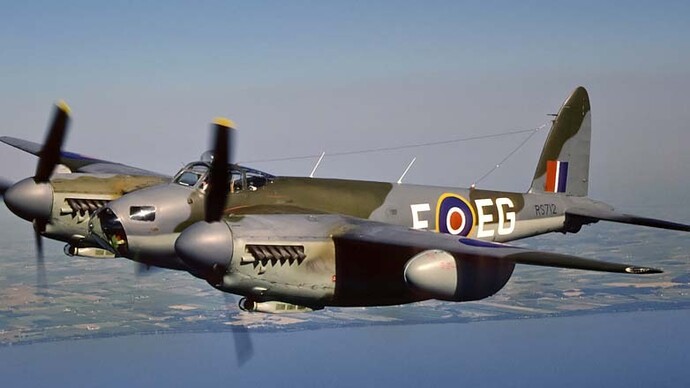

Photo courtesy of EAA
Cockpit Design
Westland Whirlwind
The Westland Whirlwind debuted the world’s first bubble canopy design, offering pilots better visibility from the low and forward location cockpit. Flight controls were essential for the era. Standard controls include hydraulic controls for the retractable landing gear and flaps, throttle controls, a two-way radio, a collection of the all-important fuel, and an airspeed indicator. The Whirlwind cockpit offers little creature comforts.


De Havilland Mosquito
Stepping into the De Havilland cockpit, you will notice the thoughtful side-by-side seating formation for the pilot and navigator and well-laid-out instrumentation with the engine gauges along the left-hand side and tiny hatch access on the right-hand side leading to a clear bomb screen on the nose. The crew enters and exits the aircraft through a small door beside the navigator’s seat on the right side. The cockpit features creature comforts like cabin pressurization for high-altitude operations and heating for the crew during cold weather missions.


Winner – De Havilland Mosquito
Having a comfortable cockpit is a requirement of high-altitude aircraft, and De Havilland Mosquito’s have one the most comfortable cockpits rivaling those on larger bomber aircraft. They feature an open glass design allowing pilots to see aircraft flying overhead. In contrast, the Whirlwind cockpit was no different from other World War 2 fighters. It offers pilots exceptional visibility and access to the basic controls but could get uncomfortable in extreme weather.
Engines
Westland Whirlwind
Westland’s choice of engines for the Whirlwind fighter plane was the Rolls Royce Peregrine, an improved and supercharged version of the successful Kestrel engine. In theory, the 12-cylinder liquid-cooled engine developing 885 horsepower proved the perfect power plant for Westland’s new high-altitude heavy fighter and by all indications, should have been a winner. But the Peregrine was underpowered with reliability issues, and problems from the onset beset them. An early Whirlwind prototype almost crashed when an engine exhaust duct broke and heat-fractured an aileron control rod. Additional problems with the Peregrine engines include underwhelming high altitude performance and overheating issues due to its unconventional radiator location. Rolls Royce never managed to completely sort out the Peregrine problems because the company’s priority at the time was on perfecting the newer Merlin engine. As a result, the Peregrine was canceled in 1943.
De Havilland Mosquito
The power plant for the De Havilland Mosquito was the Rolls Royce Merlin v12 engine developing 1,710 horsepower at 37,000 ft (11,000 m). Developed in 1933, the Merlin engine was the RAF engine of choice in several fighters, including the Spitfire and Hawker, before powering the De Havilland Mosquitos. The Merlin engine benefited from a lengthy development process, significantly improving its performance and reliability. For example, earlier production versions of the Merlin engine produced 1,000 horsepower compared to later models running on higher octane ratings to produce over 1,800 horsepower. The Merlin engine had an impressive high altitude performance, thanks to a single-stage single-speed gearbox (later versions of the engine had a two-stage two-speed gearbox with intercooler) supercharger, which benefited from design improvements during its long production run.
Winner – De Havilland Mosquito
Without question, the winner is the De Havilland Mosquito’s Rolls Royce Merlin engine which delivered excellent performance and was renowned for its outstanding performance. Although the Whirlwind Peregrine engines had a satisfactory design with an impressive pedigree, they languished at the bottom of Rolls Royce’s development program with limited use, and only 301 engines were built.
Performance
Westland Whirlwind
Although the Westland Whirlwind was considered a failure and a great disappointment in many circles. It displayed excellent flying and handling characteristics, with several pilots praising the heavy fighter’s performance at all speeds. The Whirlwind’s speed, fast climb rate, and excellent maneuverability gave it an unparalleled advantage over enemy fighter planes, including the Messerschmitt Bf 109 at lower altitudes. However, the Whirlwind’s limited range (under 300 mi, 400 km) limited its effectiveness as a bomber escort, a role where the Spitfire and Hurricane excelled.
De Havilland Mosquito
Widely acknowledged for its versatility, range, and fast speeds, the De Havilland Mosquito had a reputation for light-handed controls and excellent maneuverability. However, inexperienced pilots struggled with poor aileron response during take-off and landing. De Havilland Mosquitos were not easy airplanes to fly, and squadrons were manned by experienced pilots who could competently handle the temperamental workhorse. The Mosquito’s high stalling speed of 120 mph, power-to-weight ratio, and wing loading is the highest of any twin-engine WW2 military aircraft. Taking off in a Mosquito isn’t for the faint-hearted due to the aircraft’s unusually high Vmc. Mosquito pilots were taught to keep their fully loaded airplanes on the ground for as long as possible to gain full momentum and then take off with only 200 yards of runway left.
Winner – Westland Whirlwind
The Whirlwind was a dream to fly, with its pilots often remarking that they were among a privileged few. In our opinion, the aircraft’s sleek fuselage design and responsive flight controls gave it an edge over the De Havilland Mosquito.
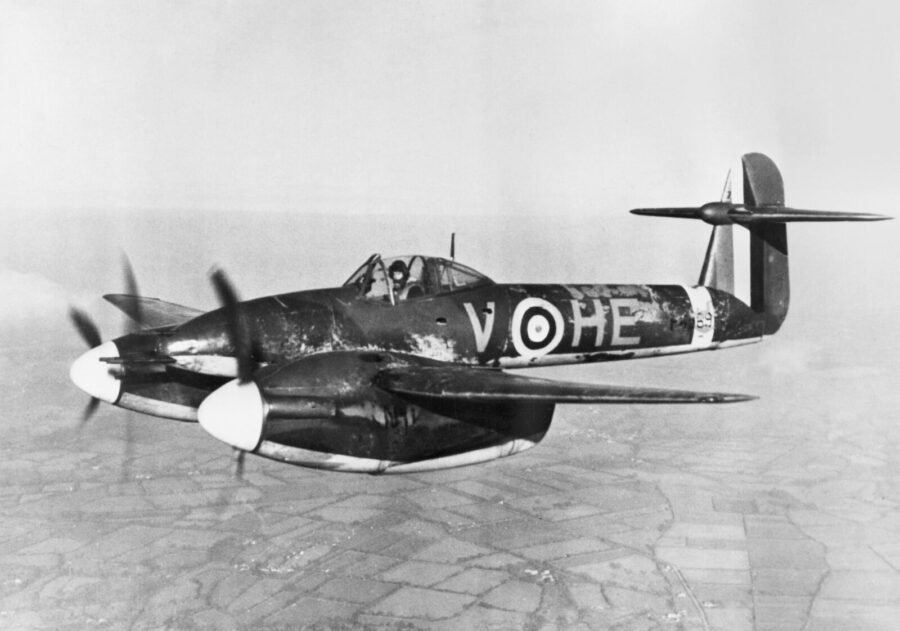

Armament & Payload
Westland Whirlwind
The Whirlwind’s most important feature was its concentration of heavy firepower. The arrangement of four nose-mounted Hispano-Suiza HS.404 20 mm autocannons with a firing rate of 600 lb./minute eliminated convergence problems associated with wing-mounted guns. It cemented the Whirlwind’s reputation as a deadly ground-attack fighter plane. It had an internal bomb bay capable of carrying 250 lb (115 kg) or 500 lb (230 kg) bombs. However, the Hispano-Suiza cannons are prone to jamming or not firing, which was a common issue with aircraft fitted with the cannon type. A solution was easing the magazine spring by not loading the ammo drums to their full capacity.
De Havilland Mosquito
De Havilland Mosquitos usually had an assortment of guns and cannons depending on the aircraft variant. The fighter-bomber variants of the Mosquito were armed with four nose-mounted 7.7mm Browning machine guns with four 20mm Hispano cannons mounted underneath the cockpit floor. They also had reinforced wings capable of carrying 250lb-500lb bombs or eight RP-3 rockets on each wing. The U-Boat killing FB Mk XVIII Mosquito variant had a Molins 6-pounder Class M cannon capable of sinking German U-Boats and surface ships. Some variants had no guns, while others were fitted with a single 57mm cannon depending on the aircraft’s intended use.
Winner – Westland Whirlwind
I am confident most readers would agree with us on this one. The Whirlwind was designed around its fixed guns to deliver superior firepower during ground attacks and in aerial dogfights.
In Active Service
Westland Whirlwind
Although the Westland Whirlwind was an excellent low-altitude fighter, it excelled at ground-attack missions over France, targeting and destroying numerous German infrastructure and supply lines, including bridges, airfields, and marshaling yards. Its four 20mm Hispano-Suiza cannons took out more German railway traffic than any Allied fighter plane. The Whirlwind also hunted German E-boats operating in the English Channel, and between October to November 1943, 12 Whirlwinds from the 263 Squadron attacked and destroyed the German blockade runner Münsterland while it was in dry dock for repairs. The Westland Whirlwind was no slouch against enemy fighter planes either. Several confirmed Whirlwind kills against the fearsome Messerschmitt Bf 109, including three Bf 109 kills with no Whirlwind loss during an aerial dogfight on 6th August 1941.
De Havilland Mosquito
The De Havilland Mosquito fighter platform is Britains most successful during World War 2, with the production of several variants fulfilling diverse roles during the aircraft’s production run. The most common WW2 Mosquito variants include photographic reconnaissance aircraft, fighter-bombers, dedicated Mosquito bombers, night fighters, and V-1 rocket hunters. The RAF used Mosquito night fighters and fighter bombers to devasting effect on airborne and ground-based German targets. The aircraft engaged in daily bombing raids on German cities, including successful psychological attacks on German factory workers and intelligence infrastructure. The aircraft’s unmatched flexibility meant it could perform any role required during the war. Any Mosquito could quickly be configured within a short period to perform strafing attacks on moving ground targets or drop bombs on large enemy installations. The Mosquito could be outfitted with rockets for a ship-busting role, and night fighters had advanced radar technology that enabled them to sneak up on their target without being discovered.
Winner – De Havilland Mosquito
A versatile and reliable platform like the De Havilland Mosquito inevitably wins this round. The Mosquito’s initial bomber design allowed easy conversion into different variants giving the aircraft an actual multi-role status serving in multiple theaters and campaigns of World War 2. The Westland Whirlwind was designed as a flying cannon, making it challenging for the aircraft to fulfill several multi-role requirements. Its limited range and few numbers also restricted its overall operational role during the war, consigning it to missions across the English Channel into Northern France.
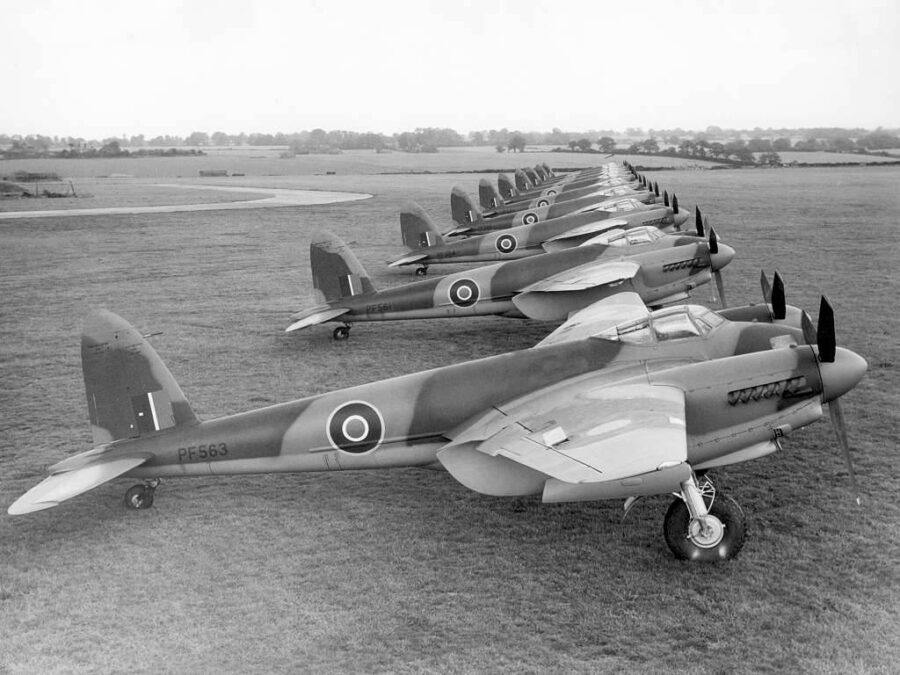

Service and Repair
Westland Whirlwind
The Westland Whirlwind wasn’t an easy aircraft to maintain. Access panels were often not present, and where they existed were fastened down by multiple screws. It was a design flaw that restricted the ground crew’s access to fighter plane control units and hydraulics and made maintenance tedious. Often the exposed sharp metal edges of the airframe would cut some poor mechanic’s hands and fingers. The aircraft designers installed important components in improbable locations. For example, workers must remove the Whirlwind’s entire nose cone to load the gun magazine, and the coolant tank had to come out to service the engine’s spark plugs.
De Havilland Mosquito
An advantage of having a wooden airframe was an easy and cheap repair. The Mosquito’s construction was relatively easy, and all mechanics had to do was swap out damaged wooden parts of the fuselage or airframe and glue back their replacement. The turnaround time for repairing or servicing a Mosquito was faster than the Whirlwind allowing aircraft to get back in the air within the shortest possible time.
Winner – De Havilland Mosquito
The De Havilland Mosquito design is a lesson for all first-year aircraft design students. A simple design is a mechanic’s dream.
Conclusion
The De Havilland Mosquito is undoubtedly the best of the two World War 2 fighter planes, and it trounced the Westland Whirlwind in five of the eight categories we used for our comparative analysis. In its defense, the Whirlwind is an exceptional aircraft in its own right, but its limited development cycle and production problems ensured its untimely demise. Besides, the Whirlwind was a victim of the prevailing conditions. The Royal Air Force’s urgent need for fighter planes and limited production materials meant they must prioritize time and resources for fighter planes that delivered near instantaneous results. And when someone was actually ready to sort out the Whirlwind teething problems, the world had moved on.
The limited number of unmodified Whirlwinds delivered to the RAF flew day and nighttime combat operations throughout their service life. They served their intended purpose of attacking enemy targets across the English Channel and engaging in homeland defense right up to their retirement.























